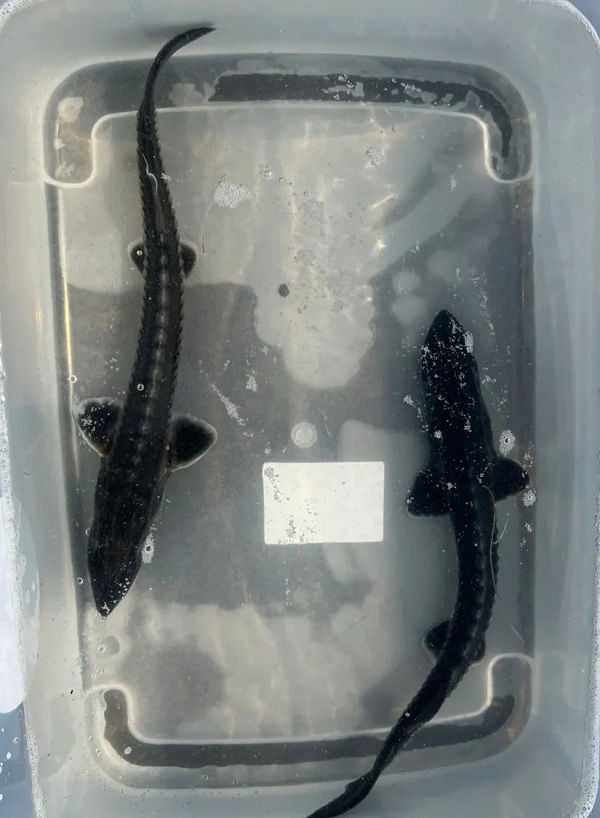

Researchers release baby Chinese sturgeons from a tank into the Yangtze River on March 28. [Photo provided to en.whkfq.gov.cn]
March 28 marked Chinese sturgeon Conservation Day in China. That day, 50,000 baby Chinese sturgeons were released into the Yangtze River in the Wuhan Economic & Technological Development Zone (WHDZ). The event is considered the largest of its kind in the history of Wuhan and is meant to improve the wildlife ecosystem in the Yangtze River.
Having lived in the river for more than 140 million years and considered a "living fossil", the Chinese sturgeon is a critically endangered species under national protection. Artificial breeding of the species is currently the most dependable way to increase its population, as letting them reproduce in natural conditions has not been successful.

The baby Chinese sturgeons released into the Yangtze River are 5.5 months old, 20 to 35 centimeters long, and 30 to 150 grams in weight. [Photo provided to en.whkfq.gov.cn]
All the baby fish were from a trial base established by the Institute of Hydroecology of the Chinese Academy of Sciences in WEDZ. "We have found after long-term observations that the number of rare aquatic creatures continues to grow in the WEDZ section of the Yangtze River. The environment here is suitable for Chinese sturgeons," explained Yang Bo, a researcher at the institute.
The zone has been devoted to preserving aquatic animals in the Yangtze River since 2002, and has released 280 million baby fish, including herrings, grass carps and silver carps. In June 2020, WEDZ took the initiative in Wuhan to launch a 10-year closed period for fishing, regulated recreational fishing activities, and arranged fish-releasing activities.